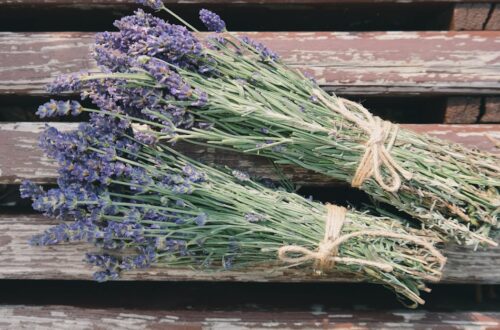Growing sunflowers indoors is an exciting and rewarding gardening endeavor that allows you to enjoy the vibrant beauty of these flowers year-round. With their large, cheerful blooms and unique ability to adapt to various growing conditions, sunflowers can thrive in your home with the right care. This comprehensive guide will delve into the essentials of nurturing sunflowers indoors, including light requirements, soil types, watering techniques, and troubleshooting tips. Whether you are a seasoned gardener or a beginner, this article will help you cultivate your indoor sunflower garden successfully.
Understanding Sunflower Varieties
Sunflower varieties vary greatly, offering options to fit any indoor gardening space. Tall varieties, such as the Giant Grey Stripe, can reach impressive heights, perfect for creating dramatic verticality in larger rooms. In contrast, dwarf varieties like the Teddy Bear or Happy Face are compact and ideal for small spaces, often growing under two feet tall. Choosing the right variety for indoors is crucial; consider factors such as light availability, pot size, and overall aesthetics. By selecting the best type for your environment, you can successfully cultivate a stunning indoor display of these vibrant flowers and experience the joy of growing sunflowers indoors, even in limited space.
Tall Varieties
Tall sunflower varieties can elevate your indoor space, emphasizing vertical growth and vibrant blooms.
Dwarf Varieties
Dwarf sunflower varieties are perfect for small indoor gardens, offering colorful accents without requiring much space.
Choosing the Right Variety for Indoors
Selecting the right sunflower variety enhances your indoor garden’s aesthetics and meets specific growing conditions.

Essential Conditions for Indoor Growth
To successfully thrive, sunflowers require specific indoor conditions. First and foremost, they need adequate lighting; ideally, provide 6-8 hours of bright, direct sunlight each day. Utilizing grow lights can supplement natural light if needed. Next, maintaining optimal temperature and humidity is crucial; sunflowers prefer temperatures between 70°F to 85°F and a 50%-70% humidity range. Lastly, a well-draining soil composition enriched with organic matter enhances growth. Consider using a blend of potting soil, compost, and perlite for best results. Understanding these essential factors is vital for thriving sunflowers, especially when exploring methods for growing sunflowers indoors, ensuring robust and healthy plants.
Lighting Needs
Sunflowers thrive on at least 6-8 hours of direct sunlight daily. If natural light is insufficient, consider supplementing with grow lights.
Temperature and Humidity
Ideal conditions are 70°F to 85°F with moderate humidity (50%-70%) to promote healthy sunflower growth.
Soil Composition
Use well-draining soil comprising potting mix, compost, and perlite for optimal nutrient access and root development.

Planting Sunflowers Indoors
To successfully plant sunflowers indoors, begin by selecting the right containers, ideally with drainage holes, to prevent waterlogged roots. For the sunniest results, choose a pot that’s at least 12 inches deep, providing ample room for root growth. When it comes to planting seeds, space them about 6 inches apart to avoid overcrowding as they sprout. Place the seeds at a depth of 1 to 2 inches in potting soil to ensure they receive necessary warmth and moisture. As seedlings emerge, ensure they receive at least 6 hours of bright light daily, using grow lights if natural light falls short. This attention to detail in choosing containers, planting seeds, and managing spacing will set you on the path to thriving indoor sunflowers!
Choosing Containers
Select pots that are at least 12 inches deep with drainage holes.
Planting Seeds
Space seeds 6 inches apart and plant 1 to 2 inches deep.
Spacing and Depth
Ensure proper spacing to avoid overcrowding and promote healthy growth.

Caring for Your Indoor Sunflowers
Caring for indoor sunflowers is essential for a thriving plant. A key aspect is watering; ensure the soil is consistently moist but not waterlogged. Overwatering can lead to root rot, while underwatering may diminish growth. Additionally, a balanced fertilizer every four to six weeks gives your sunflowers the nutrients they need to flourish. Lastly, pruning is vital for maintaining shape; snip off dead leaves and spent blooms to encourage new growth. Regular maintenance will ensure your indoor sunflowers remain vibrant and healthy, drawing attention and happiness into your space. Ultimately, proper care and attention will yield magnificent blooms even indoors!
Watering Tips
Keep the soil consistently moist, avoiding waterlogging.
Fertilizing Schedule
Use balanced fertilizer every four to six weeks.
Pruning and Maintenance
Trim dead leaves and spent blooms for healthy growth.

Pest and Disease Management
Managing pests and diseases is crucial when growing sunflowers indoors. Common pests such as aphids and spider mites can wreak havoc on your plants. Look out for yellowing leaves or webbing as key indicators of these nuisances. Additionally, diseases like powdery mildew can impede growth and affect the overall health of your sunflowers. Prevention is the best strategy; ensure adequate air circulation and avoid over-watering to create an inhospitable environment for these pests and diseases.
Common Pests to Watch For
Aphids, spider mites, and whiteflies are common pests that threaten sunflower plants. Regular inspection can help in early detection.
Signs of Disease
Powdery mildew appears as white spots on leaves, whereas brown spots may indicate fungal issues. Prompt action is essential.
Preventive Measures
Maintain proper humidity, ensure good airflow, and employ organic insecticides as preventive strategies to keep pests at bay.

Harvesting and Enjoying Your Sunflowers
Once your sunflowers have bloomed, it’s time to enjoy their beauty and benefits. Harvesting typically occurs when the back of the flower head turns yellow, usually around 70-100 days post-planting. This is an ideal time to cut the stalk at an angle, encouraging water absorption. Incorporating these vibrant blooms into your home décor adds a cheerful touch! Consider placing them in vases or using them in arrangements for celebrations. Moreover, saving seeds is a rewarding practice; allow the heads to dry completely before extracting seeds to plant next season. Engaging in these steps not only enhances your indoor gardening experience but also fosters a deeper connection with nature in your home environment.
When to Harvest
Look for a yellowing back on the flower head for optimal harvest time.
Using Sunflowers in Decor
Brighten your space with sunflower arrangements for various occasions.
Saving Seeds
Dried heads can provide seeds for next year’s planting.

Troubleshooting Common Issues
Growing sunflowers indoors can be rewarding, but it’s not without its challenges. Poor growth is often the result of inadequate light; ensure they receive at least six hours of direct sunlight daily. If you notice flower drop, this may indicate fluctuations in temperature or insufficient watering; consistency is key for healthy blooms. Lastly, yellowing leaves typically point to problems with overwatering or nutrient deficiencies. Regularly check soil moisture levels and consider using a balanced fertilizer to maintain vibrant greens. By addressing these common issues promptly, you can enjoy lush and blooming sunflowers indoors throughout the season.
Poor Growth
Inadequate light can stunt your sunflowers. Aim for at least six hours of direct sunlight.
Flower Drop
Fluctuating temperatures or inconsistent watering can lead to flower drop. Keep conditions stable.
Yellowing Leaves
Overwatering or nutrient deficiencies often cause leaves to yellow. Adjust watering and feed appropriately.

Conclusion
In conclusion, growing sunflowers indoors offers a delightful way to bring nature into your home, and with the right knowledge, anyone can succeed in this hobby. By following the guidelines provided in this article, you will be well on your way to successfully growing sunflowers indoors. So, roll up your sleeves and start planting your very own indoor sunflower garden!






